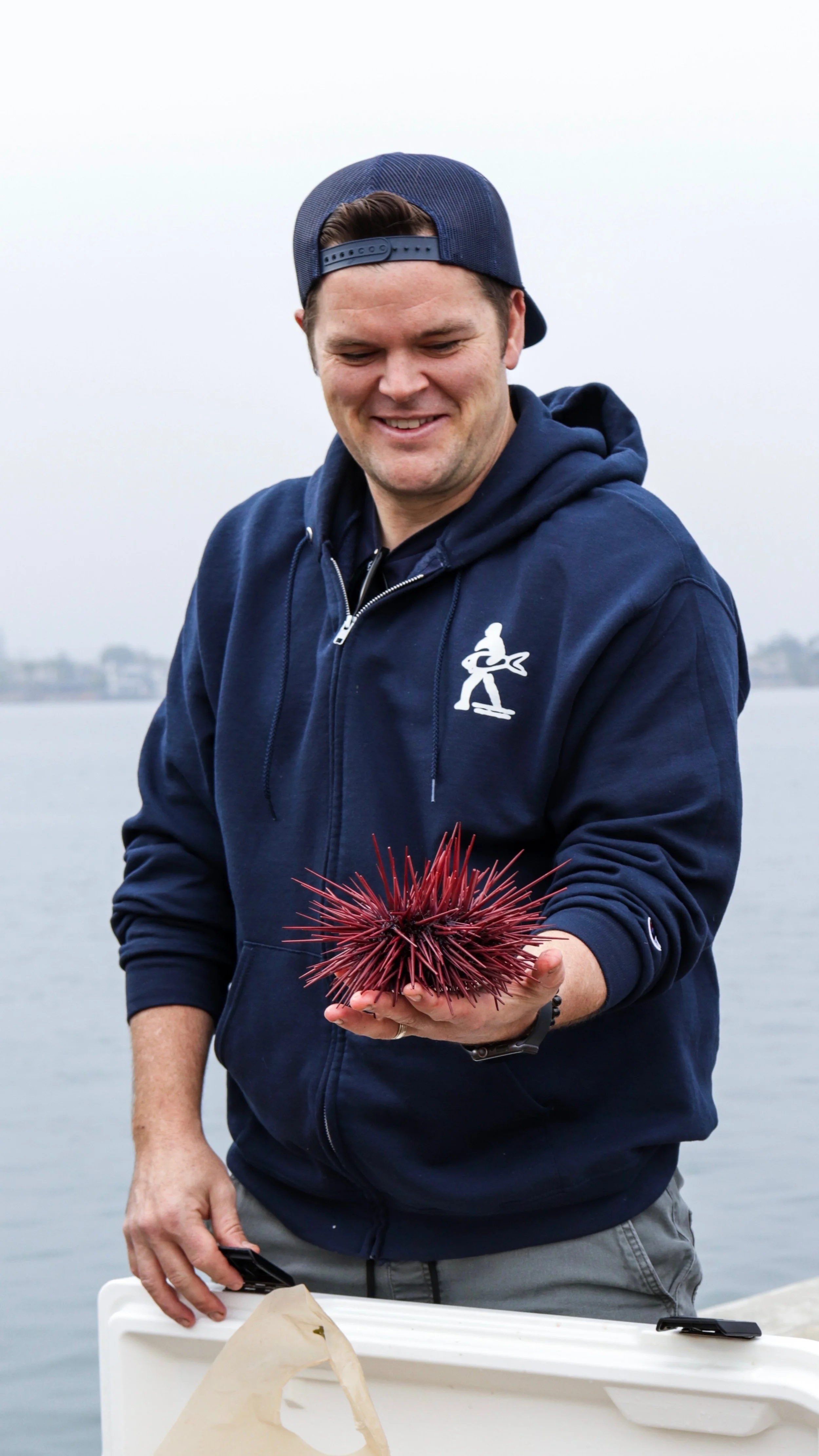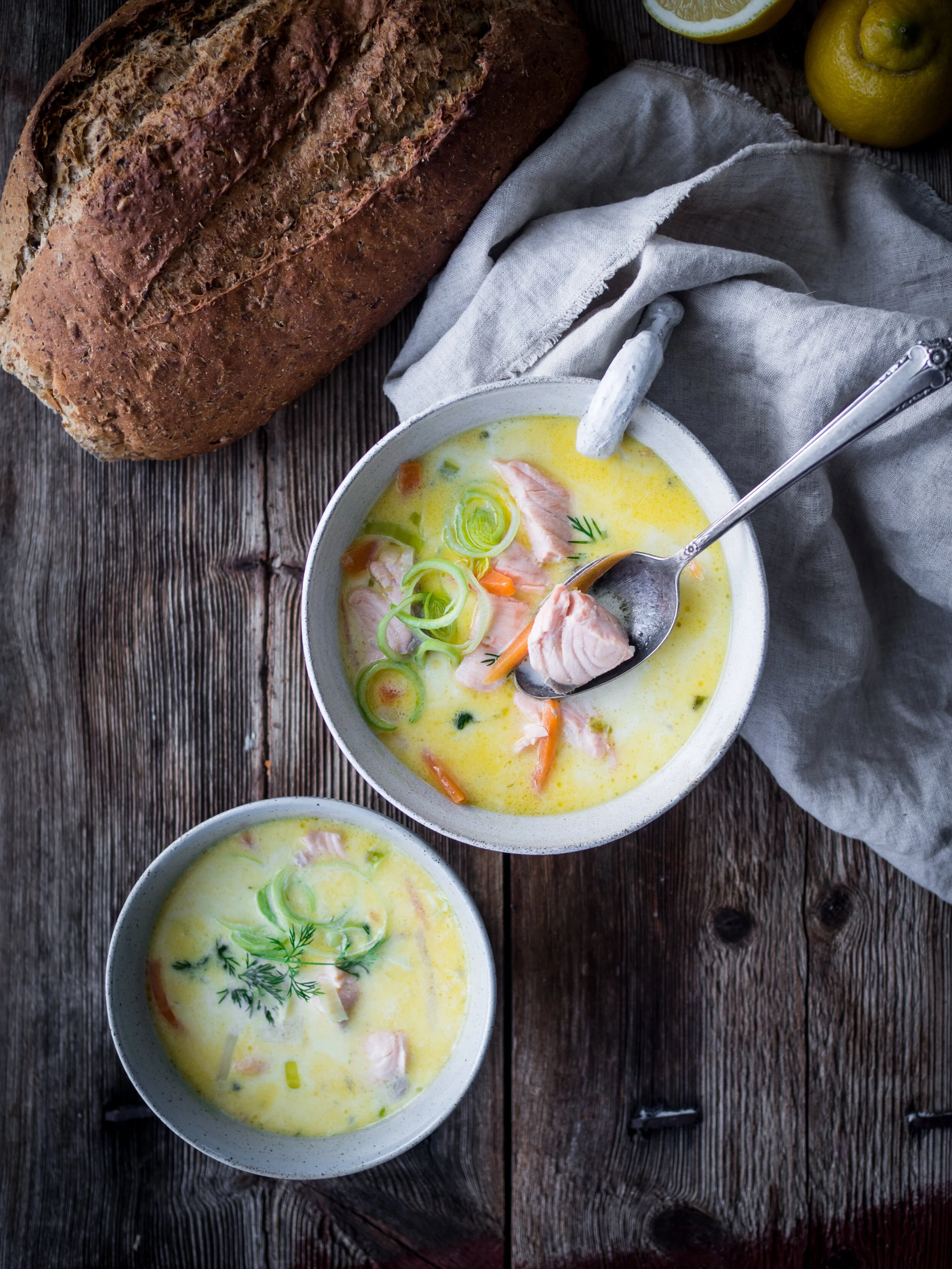Chefs Unite to Inspire Us to Eat More Blue Foods
In Norway, blue foods are deeply rooted in the local cuisine and culture. For curing, hot and cold smoking, cooking, and even eating raw, there are a multitude of ways we enjoy what is bountifully provided by the surrounding waters. At Kvaroy Arctic, we believe that what we put on our tables today has an impact on our collective tomorrow—that’s why choosing sustainably raised, harvested, or caught blue foods is a multi-directional solution that can feed people with hearty protein while also strengthening local economies and eco-systems.
Every Month Should Be National Seafood Month
Every October we are very excited because it’s National Seafood Month. The reality is that every day is the perfect time to invite the transformative power of blue foods into your home and kitchen. Whether it be shellfish, finfish, or seaweed, every sustainably raised, caught, or harvested blue food is rich in benefits and, most importantly, helps improve the health of people and planet!
Chefs United
To inspire you to eat more fish and seafood, this National Seafood Month we invited 11 renowned chefs to talk about the sustenance that blue foods bring, how valuable it is to eat them on a weekly basis, and how to develop a taste for them by including them in various nurturing recipes.
Chefs Andew Zimmern, Cat Cora, Michelle Minori, GiGi Dubois Ashworth, Eric Gephart, Kwame Onwuachi, Adrienne Cheatham, Nevada Berg, Tavel Bristol-Joseph, Marisel Salazar, and Travis Swikard shared with us their personal experiences in inviting more blue foods—including wild and farmed finfish, shellfish, seaweed, and sea veggies—into their homes, restaurants, and kitchens.
Their stories all have one big thing in common - they have witnessed first-hand that when you choose to buy, cook, and eat sustainably raised blue foods, you are:
🐟 Supporting fishers, water farmers, local economies, and environmental ecosystems
🐟 Helping increase everyone's access to the most nutritious foods on the planet
🐟 Creating a more sustainable and resilient food system for the future
Chef’s Highlights on Blue Foods
In our conversation, Chef Michelle Minori pointed out: “We are all interconnected and it is really important to know where your food comes from, that’s why I build and keep a connection with local fishermen, which also allows me to see all the hard work they are doing.”
Chef Andrew Zimmern focused on the economic and ecological sustainability of blue foods: “If we invest in aquaculture, we can harvest more fish from the ocean and won’t have to deal with the horrific issues we have right now such as overfishing.” Aquaculture at scale is existential at this moment—it means cultural economics, business development, taking care of communities and human health, while building a sustainable food system for the planet—an invaluable piece in sorting out many challenges that we are facing right now.
To confirm all that, Chef Cat Cora shared about the catfish aquafarming that has transformed Mississippi since 1965 and how it has boosted the economy of a very economically challenged state and fed a lot of people, providing them with valuable protein.
Chef Travis Swikard also discussed the significance of sourcing: “As a chef, it’s important to know all your ingredients and the people behind them. Having a relationship with the people who do the right things in the oceans and working directly with fishermen, fisherwomen, and, in general, fishing families, is of incredible importance for my work.” Seasonal fishing is another big theme for Travis, which is why he keeps in touch with the local fishermen who respect the waters and follow a knowledge-based approach when fishing.
Similarly, coming from a South American community where generations of families go out to fish for dinner, it is in Chef Tavel Bristol-Joseph’s culinary DNA to be focused on local and seasonal sourcing as well as on utilizing the whole fish he buys for his restaurant (e.g., using all the trimmings and making fish stock). Sourcing the best seafood that we can possibly find is as important as making the most out of what you have. Seafood is the main dietary group accessible to communities in areas such as the Caribbean and South America.
Chef Adrienne Cheatham shared: “It’s valuable to find ways that seafood is consumed around the world and bring[ing] them back to the U.S. will help [us] develop the taste for it.”
And, finally, Chef Kwame Onwuach said: “There is higher nutritional value in seafood but we need to find ways to consume it and scale it in a smart way. More than ever, we need to really understand where our fish is coming from.”
Next Steps
Whether it be finfish, shellfish, or sea vegetables, these nutritious foods all deserve a seat at your table. We are here to support you with recipes, ideas, inspiration, sustainable salmon products, and many other recommendations that will guide you in your journey toward embracing blue foods.
To help you further dive into the many benefits of blue foods and ways to enjoy them in your home, you can dive into "How the Blue Foods We Eat Today Will Impact Our Tomorrow”.
Recipes to Try
🐟 Simple, nutritious, seasonal meal Mediterranean Salmon & Spaghetti Squash
🐟 Chef Andrew Zimmern is inviting you to turn our sustainable smoked salmon into an irresistible salmon dip
🐟 Fancy and tasty sparkling beet salmon
🐟 Reimagine food classics by transforming them with a touch of blue foods – like this tzatziki dip that Chef @CatCora prepared with salmon
🐟 All-seasons healthy staple – smoked salmon salad



